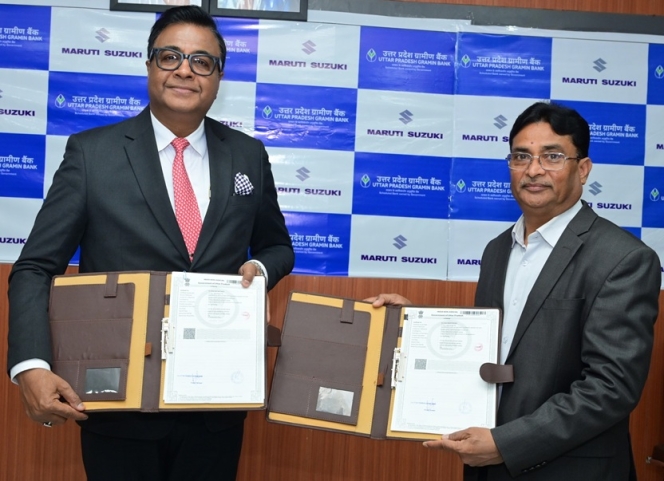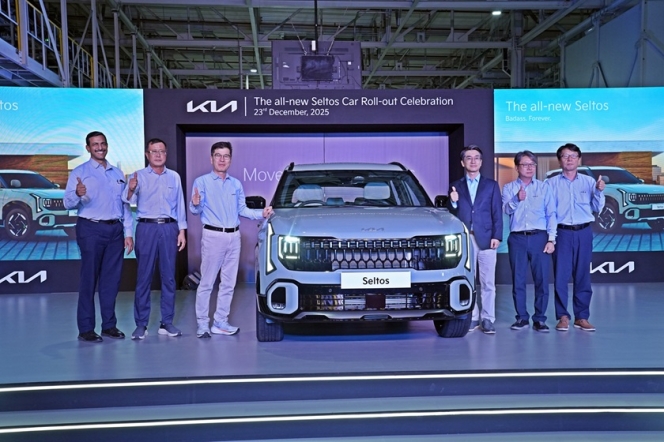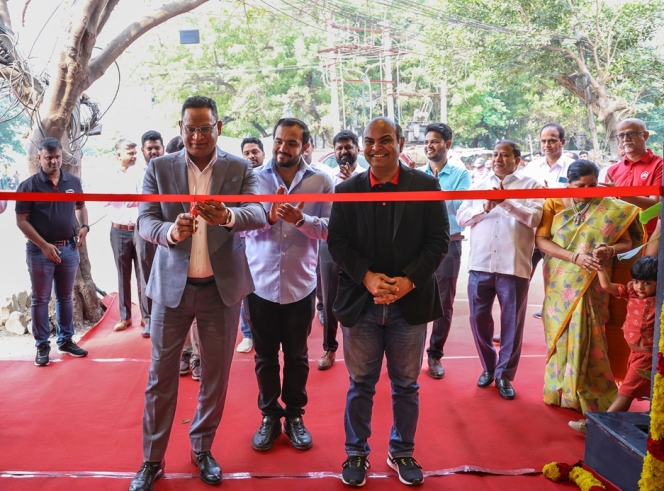
Ever since Maruti Suzuki launched the Swift in 2005, it broke the hatchback segment’s utilitarian image and added a sporty flair that this class seriously lacked. Since then, Swift has managed to rule the roost being a driver-oriented car that boasts a youthful design. Not sitting on its past laurels, India’s most successful automobile manufacturer has given the third-generation Swift a minor facelift. Is the 2021 Swift all about a nip-and-tuck job or is there a lot more to it than that? Let’s find out.
 Engine:
Engine:
We will get into the design and cabin tweaks a bit later as the biggest update Swift has received is a new, more powerful petrol engine. In terms of capacity, the new powertrain remains 1.2-litre, but the new Dualjet motor gets two injectors in each cylinder instead of one. Due to this, the new 1.2-litre engine churns out 89 bhp roughly 6 bhp more than the older one. This is the same engine that also powers the Dzire. On paper, the torque output remains the same at 113 Nm but it’s much better distributed, resulting in an improved and balanced response.
Step on the pedal, and it accelerates smoothly. Two things that you’ll notice is the lack of mechanical vibrations from the engine and, more importantly, Maruti has negated the turbo lag, ensuring that the power delivery is effortless. This makes the driving experience enjoyable. The Swift doesn’t fire up the afterburners from the word go, but the low-end torque offers a linear hassle-free pickup. Things start getting more interesting in the mid-range power band, where the power surge can be felt from around 4,000 rpm and easily goes beyond the 6,000 rpm mark. In terms of refinement, even when the powertrain is pushed, it remains and feels stress-free.
Another new addition to the Swift is the start/stop system, which shuts off the engine if it’s idling for a long span. This helps in improving the fuel economy and Maruti Suzuki claims that the Swift manual returns a mileage of 23.30 kmpl while 23.76 kmpl in the AMT (automatic) trim, increasing the figures by 2 kmpl.
Driving experience:
The Swift continues to be mated with a 5-speed manual transmission and 5-speed AMT. We drove the former trim and the gear stick slots in easily. The steering wheel, on the other hand, feels a bit too light and lacks the feedback one would have liked. Practically speaking, the featherweight steering does make it easy to drive in the city or park the car in tight spots, but it doesn’t compliment Swift’s handling prowess. The hatchback tames sharp corners like a hot knife through butter while remaining planted to the tarmac. The Heartect platform makes the hatch light and agile and continues to offer a go-kart-like experience.
The ride quality is slightly on the firm side though it manages to insulate the bumps and undulations on the road. But it’s best to slow down once it encounters potholes.

Exterior and cabin tweaks:
From the outside, the Swift remains more or less the same apart from the new honeycomb or mesh front grille with a smart looking chrome strip running across it and sporting the Suzuki logo. Apart from that, the 2021 Swift now gets three dual-tone colour options — white with black roof, red with black roof and blue with white roof.
The cabin, on the other hand, does come with some new upgrades and the first thing that will catch your attention is the new 7-inch touchscreen, or as Maruti calls it,
SmartPlay Studio. With colours like orange, blue, green and yellow on the display, it’s brighter than the previous version and easier to read. The touchscreen is responsive and it supports Apple CarPlay and Google’s Android Auto. Moving on to the instrument cluster, Swift gets a new colour multi-information display (MID) placed between the speedometer and the rev meter. The MID was initially launched in Maruti’s Nexa range. Then there’s great news for those who drive long distance, especially on highways regularly. Keeping convenience in mind, the Swift now comes with Cruise Control and also gets automatic folding outside rearview mirrors.
The Swift isn’t the biggest hatchback in its segment; therefore, this translates into limited space for the rear passengers. Compared to its competition, Swift’s cabin plastic quality is fairly average and it lacks some features like a wireless phone charger, rear AC vents or connected technology. Even though it may be showing its age, the car is fully loaded with safety features like twin airbags, reverse parking sensors, Anti-Lock Braking System and Electronic Brakeforce Distribution with brake assist and Electronic Stability Program with Hill Hold Assist, which is standard in AGS or AMT variants.
Verdict:
The 2021 Swift, no doubt, remains very popular among young buyers and continues to offer a fun driving experience. It comes with basic features, but the ace in the pack for the Swift is its new 1.2-litre engine, which offers more power and better fuel economy. But priced from INR 573,000 to INR 841,000, ex-showroom Delhi, the Swift is expensive when compared to its competition, especially when others are offering top-end diesel trims at the same price. Of course, one can’t deny that it’s still backed by the country’s most comprehensive service network. The Swift remains a force to reckon with. (MT)
Citroen India Delivers 51 C3 CNG Vehicles To Luthra Group
- By MT Bureau
- December 24, 2025
Citroen India, in partnership with its dealership La Maison Nanavati, has completed the handover of 51 Citroen C3 CNG vehicles to the Luthra Group. The ceremony took place at the Luthra Group’s headquarters in Surat.
The delivery is part of Citroen's strategy to expand its presence in tier-II and tier-III markets by providing mobility solutions to businesses and individuals.
The Citroen C3 CNG is designed for high-usage environments and daily commutes. The model includes several features tailored for the Indian market, integration of a factory-fitted CNG kit to manage running costs. A suspension system tuned specifically for local road conditions. Provisions for cabin space and air-conditioning systems designed for high-ambient temperatures.
The handover to Luthra Group represents the brand's focus on cost-efficient transportation. By targeting the regional business sector, Citroen India aims to strengthen its footprint in Gujarat and the broader Indian mobility market.
The C3 CNG is positioned as a solution for users requiring reliability and low operating expenses without compromising on ride comfort.
Maruti Suzuki India Partners Uttar Pradesh Gramin Bank For Retail Financing
- By MT Bureau
- December 24, 2025

Maruti Suzuki India has signed a Memorandum of Understanding (MoU) with Uttar Pradesh Gramin Bank, a regional rural bank, for vehicle retail financing partnership on new cars, pre-owned vehicles and commercial vehicles.
This collaboration marks the 50th retail finance partner for Maruti Suzuki India. The partnership is intended to use the bank’s network to provide credit options to a range of customer profiles, particularly in rural and semi-urban regions.
The partnership aims to increase the accessibility of Maruti Suzuki products through, tailored finance schemes designed for rural and regional customers.
Partho Banerjee, Senior Executive Officer, Marketing & Sales, Maruti Suzuki India, said, “Our partnership with Uttar Pradesh Gramin Bank marks a significant milestone as we onboard our 50th retail finance partner. This reinforces our commitment to making car ownership simpler and more affordable for customers across India. By expanding our reach through this strategic alliance, we aim to empower buyers with competitive, customer-friendly financing solutions that enhance the overall purchase experience. We remain focused on delivering seamless, tailored finance options, and this collaboration strengthens our vision of providing the Joy of Mobility to aspiring Indian consumers.”
Yadav S. Thakur, Chairman, Uttar Pradesh Gramin Bank, said, “At Uttar Pradesh Gramin Bank, empowering customer aspirations is at the heart of everything we do. Our partnership with Maruti Suzuki, a leader in the automotive industry, is a strategic step towards enhancing our service offerings and delivering greater value to our customers. This collaboration aligns with our 'Customer-First' mission, enabling us to provide accessible and affordable vehicle financing solutions. We look forward to helping more individuals and families across the country realise their dream of owning a Maruti Suzuki vehicle.”
Kia India Commences Production Of New Seltos In Anantapur
- By MT Bureau
- December 23, 2025

Kia India has started production of the latest generation Seltos at its manufacturing facility in Anantapur. The company has confirmed that prices for the mid-SUV will be announced on 2 January 2026.
The Anantapur plant, established in 2019, serves as a hub for both the Indian domestic market and international exports. The facility uses automation and a local workforce to manufacture the Seltos, which was the first model produced by the company in India.
The new model is built on Kia’s K3 platform, which has been engineered to increase structural rigidity and improve suspension damping. The vehicle has grown in size compared to its predecessor to increase cabin space and stability. It has 4,460 mm of length, 1,830 mm of width and a wheelbase of 2,690 mm.
The exterior design follows the ‘Opposites United’ philosophy, featuring a ‘Digital Tiger Face,’ LED projection headlamps, and alloy wheels with neon brake callipers.
The vehicle integrates several digital interfaces and driver assistance systems. It features an upgraded Kia Connect 2.0 suite with over-the-air (OTA) software updates and a proximity unlock function.
In terms of safety, it gets 24 features as standard, while ADAS Level 2 offers 21 autonomous features to assist the driver. The Kia Seltos SUV comes with three engine options – 1.5-litre Petrol producing 115 PS of power and 144 Nm of torque, 1.5 T-GDI Petrol producing 160 PS of power and 253 Nm of torque and a 1.5-litre diesel engine producing 116 PS of power and 250 Nm of torque.
Transmission choices include a 6-speed manual (6MT), intelligent manual (6iMT), IVT, 7-speed dual-clutch (7DCT) and a 6-speed automatic (6AT). The model will be sold in four trims – HTE, HTK, HTX and GTX – with additional option variants and an X-Line styling pack.
Gwanggu Lee, Managing Director & CEO, Kia India, said, “The roll-out of the All-New Kia Seltos marks a proud milestone for Kia India. Seltos has long set benchmarks in the mid-SUV segment, and this new generation represents a bigger, bolder, and more progressive evolution shaped by insights from Indian customers. With production now underway at our Anantapur facility, our teams are fully geared to ensure customers can take delivery of their all-new Seltos without long waiting periods. We are confident the all-new Seltos will once again redefine expectations in the segment and strengthen Kia’s leadership in India."
“The new Seltos looks fantastic. The Anantapur team, together with our supplier partners, have done an outstanding job in delivering our customers a great looking, significantly bigger, technologically progressive and safe vehicle with impressive functionality and connectivity,” he said.
- Citroen India
- Jeep
- Stellantis
- Citroen 2.0
- Shailesh Hazela
- Kumar Priyesh
- Sree Venkata Teja Kethineni
- VTK Automobiles
Citroen India Opens 126th Outlet In Chennai Under Citroen 2.0 Strategy
- By MT Bureau
- December 23, 2025

Stellantis-owned French automotive brand Citroen India has inaugurated its 126th point of sales and service (POS&S) facility in Chennai, continuing the expansion of its network under the ‘Citroen 2.0 – Shift Into The New’ strategy.
The new 3S (Sales, Service and Spares) facility is located at Chitlapakkam, near Chrompet. It is an extension of the partnership with VTK Automobiles, which now operates five Citroen touchpoints in the city. The outlet functions as a ‘Stellantis Brand House,’ allowing customers to access both Citroen and Jeep brands within a single space.
Since the announcement of the Citroen 2.0 strategy, the brand has increased its network by 48.6 percent. Over the last six months, the company added 43 points of sale through its network expansion programmes. Citroen expects to reach a total of 135 outlets by the end of the year, with further operations planned for the north, west, and east of India.
The strategy focuses on several pillars – deepening the domestic supply chain for India-centric products. Expanding the dealer footprint into Tier 2 and Tier 3 locations. Using digital tools and unified spaces for sales and aftersales services.
Shailesh Hazela, CEO and Managing Director, Stellantis India, said, “The expansion of Stellantis network further with VTK dealership in Chennai marks another important step in Citroen and Jeep India’s network growth strategy. Chennai is a key market for us, and this upgraded facility will enable us to serve our customers better with a seamless sales and ownership experience. Aligned with our Citroen 2.0 strategy, we remain committed to strengthening our dealer partnerships and building a robust, customer-centric network across the country.”
Kumar Priyesh, Director Automotive Brands, Stellantis India, said, “We have grown our network by almost 48.6 percent since we announced the Citroen 2.0 strategy and have been able to expand our operations in different parts of country: adding tier 2/3 locations while further strengthening in Metro/ Tier 1 cities. Through project Visitar, Network Expansion Program and expansion in new geographies we added over 43 POS in the last 6 months and are already in advanced stages to start additional operations in North, West and Eastern parts of the country and expected to close the year with 135 POS for Citroen.”
Sree Venkata Teja Kethineni, Dealer Principal, VTK Automobiles, said, “We’re happy to partner to this pivotal shift in automotive retail, proudly representing Jeep and Citroen. Our dual-brand strategy empowers us to deliver a truly elevated and distinctive experience – whether customers seek rugged performance or refined sophistication. With passion, professionalism and personalised care at the core, our team is committed to exceeding expectations and upholding the global standards these iconic brands represent.”
The facility includes a service centre equipped with diagnostics and digital tools. Staff members are trained across both Jeep and Citroen product lines to provide technical support and product information.






Comments (0)
ADD COMMENT